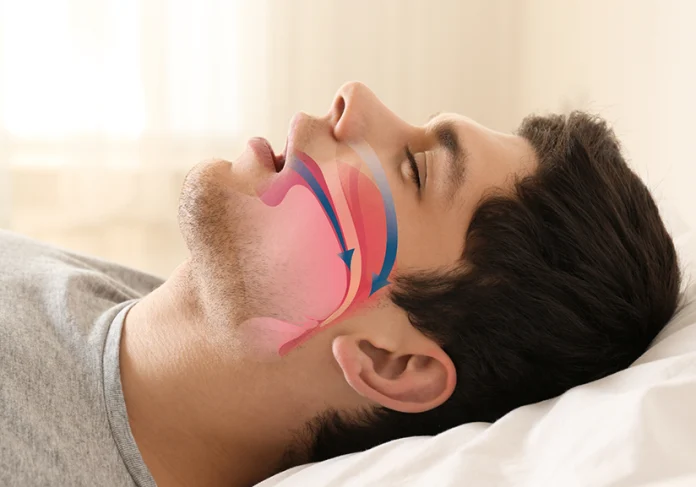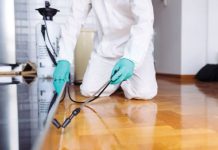Introduction
Sleep apnea is a potentially serious sleep disorder that affects millions of people globally, often without their knowledge. Characterized by repeated interruptions in breathing during sleep, it can severely impact overall health, energy levels, and quality of life. While sleep apnea is often associated with general medicine or sleep specialists, an sleep apnea ent doctor plays a crucial role in its diagnosis and treatment.
This article explores the deep connection between sleep apnea and ENT-related conditions. We’ll look at causes, risk factors, symptoms, diagnosis, and the variety of treatment options available—especially those within the domain of ENT specialists.
What Is Sleep Apnea?
Sleep apnea is a disorder where breathing stops and starts repeatedly during sleep. There are two main types:
- Obstructive Sleep Apnea (OSA): The more common type, caused by a blockage in the upper airway.
- Central Sleep Apnea: Less common, caused by a failure of the brain to signal the muscles to breathe.
A third type, Complex Sleep Apnea Syndrome, is a combination of both. Among these, obstructive sleep apnea is the one most closely linked to ENT-related anatomical issues.
Why ENT Matters in Sleep Apnea
ENT doctors, also known as otolaryngologists, are uniquely qualified to identify and treat anatomical obstructions in the airway. They focus on the nose, throat, and related structures—areas that directly impact breathing during sleep.
Some of the most common ENT-related causes of sleep apnea include:
- Enlarged tonsils or adenoids
- Deviated nasal septum
- Nasal polyps
- Chronic sinusitis
- Tongue or jaw structure abnormalities
- Obstruction in the throat or larynx
ENT specialists conduct detailed evaluations of these structures to determine whether surgical or non-surgical treatments can relieve sleep apnea symptoms.
Signs and Symptoms of Sleep Apnea
Many people with sleep apnea are unaware they have it. Often, it’s a bed partner who notices the symptoms first. Here are the most common warning signs:
- Loud, chronic snoring
- Gasping or choking during sleep
- Long pauses in breathing
- Daytime fatigue and sleepiness
- Morning headaches
- Difficulty concentrating or memory issues
- Irritability or mood swings
- Dry mouth or sore throat upon waking
Children with sleep apnea may also show signs like hyperactivity, poor school performance, bedwetting, and developmental delays.
Risk Factors for ENT-Related Sleep Apnea
Several factors increase the likelihood of developing sleep apnea, many of which involve ENT concerns:
- Tonsil or Adenoid Hypertrophy: Common in children; enlarged tonsils or adenoids can block the airway.
- Obesity: Extra fat deposits around the upper airway can restrict breathing.
- Nasal Blockages: Deviated septum, polyps, or chronic allergies can reduce airflow through the nose.
- Structural Abnormalities: Small jaw, thick neck, or large tongue base can create obstructions.
- Smoking: Increases inflammation and fluid retention in the airway.
- Family History: Genetics may play a role in structural predispositions.
Diagnosing Sleep Apnea: The ENT Approach
An ENT doctor begins with a thorough medical history and physical examination of the nasal and throat passages. If sleep apnea is suspected, the following diagnostic tools may be used:
1. Endoscopic Examination
A flexible endoscope is inserted through the nose to inspect the nasal cavity, throat, and vocal cords. This allows the doctor to pinpoint any physical obstructions.
2. Polysomnography (Sleep Study)
This is the gold standard for diagnosing sleep apnea. It records brain activity, oxygen levels, heart rate, breathing patterns, and limb movements overnight. ENT doctors often refer patients for this test in collaboration with sleep clinics.
3. Imaging Tests
CT scans, X-rays, or MRIs may be ordered to provide detailed images of the airway and skull structures. These are particularly helpful before any surgical intervention.
ENT Treatments for Sleep Apnea
ENT doctors offer both non-invasive and surgical solutions to treat sleep apnea based on the underlying cause.
Non-Surgical Treatments
1. Nasal Decongestion and Allergy Management
For patients with nasal congestion or allergic rhinitis, managing the inflammation with sprays, antihistamines, or immunotherapy can significantly improve airflow.
2. Continuous Positive Airway Pressure (CPAP)
Though not ENT-specific, CPAP machines are often recommended. They keep the airway open using mild air pressure. ENT doctors help optimize CPAP effectiveness by ensuring the nasal and airway passages are structurally sound.
Surgical Treatments
When non-invasive methods fail or if structural abnormalities are evident, surgery may be the best solution.
1. Tonsillectomy and Adenoidectomy
Commonly performed in children with sleep apnea, removing enlarged tonsils and adenoids can restore normal breathing patterns.
2. Septoplasty and Turbinate Reduction
Corrects a deviated septum and reduces the size of the turbinates to enhance nasal airflow.
3. Uvulopalatopharyngoplasty (UPPP)
Involves removing tissue from the soft palate and uvula to enlarge the airway.
4. Inspire Therapy (Hypoglossal Nerve Stimulation)
A newer treatment for moderate to severe OSA, this implantable device stimulates tongue muscles to prevent airway blockage during sleep.
5. Tongue Base Reduction or Hyoid Suspension
Used in severe cases where the tongue falls back and blocks the airway.
Each of these procedures is carefully considered based on the patient’s anatomy, age, overall health, and severity of the condition.
Pediatric Sleep Apnea and ENT
Children, especially between the ages of 3 and 7, are particularly susceptible to ENT-related sleep apnea due to the size of their tonsils and adenoids. Early intervention is critical, as untreated pediatric sleep apnea can lead to behavioral issues, growth problems, and poor academic performance.
ENT specialists play a central role in diagnosing and treating sleep apnea in children. In many cases, a simple tonsillectomy or adenoidectomy can resolve the issue completely.
Lifestyle Changes to Support ENT Treatments
In addition to medical or surgical treatment, certain lifestyle changes can greatly enhance sleep apnea management:
- Maintain a healthy weight
- Sleep on your side instead of your back
- Avoid alcohol and sedatives before bedtime
- Practice nasal hygiene (e.g., saline rinses)
- Create a sleep-friendly environment: dark, quiet, and cool
These adjustments, combined with ENT-directed treatments, can offer long-lasting relief and better sleep quality.
Conclusion
Sleep apnea is more than just a loud snore—it’s a serious condition that can affect every part of your life. An ENT specialist plays a pivotal role in identifying and resolving the anatomical causes behind this disorder. From diagnostic endoscopy to surgical solutions tailored to your unique airway structure, ENT care offers a targeted and effective path to better sleep and overall health.
If you suspect you or your child might have sleep apnea, seeking a consultation with an ENT doctor could be the key to a healthier, more restful life. Don’t let sleep apnea silently undermine your well-being—take the first step toward understanding and treating it today.




